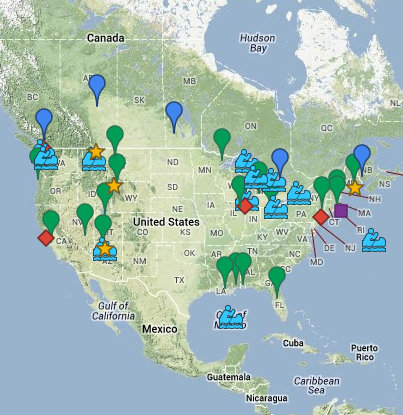Cape Mendocino is the westernmost point in California, at the northern end of the state's remote "Lost Coast."
AERIAL VIEW
But it's also the mainland address of the Mendocino Triple Junction and the northern end of the San Andreas Fault. Just offshore, the San Andreas curves westward to meet the Mendocino transform fault (which then heads west out to sea) and the Gorda Ridge, which heads north off of Oregon.
The San Andreas began in the Gulf of California and cut northwards up the state until going out to sea at Daly City, just south of San Francisco. It followed the coast north, bisecting Stinson Beach and Tomales Bay (forming the Point Reyes Peninsula), and also geologically isolating a splinter of the coast between Fort Ross and Point Arena, before finally arriving here.
Plate boundaries are active enough. Bring three together and add a sharp bend to a big fault and you're bound to have problems. This is the most seismically active area in California which we'll come back to in a minute. Ironically, just as we were winding our way out here, there was a magnitude 7.9 quake in the Aleutians, which caused me a short pause before heading down to the beach (we learned quickly that no big wave was generated, and even if there had been one, it would have arrived here many hours later, but wouldn't that have been exciting!).
The big seastack off of Cape Mendocino is Sugarloaf. I've tried unsuccessfully to find clues about its geology online. Much of the geology around here is Franciscan, which means this could be any number of things, including a very big lump of basalt. But I don't know.
To the south is a distinct terrace. Singley Flat is actually several terraces, formed by successive uplifts of the coast. The most recent excitement was in late April, 1992, when a 7.2 earthquake lifted this section of coast several feet (the amount varied locally). A little more on Singley Flat in the next post.





No comments:
Post a Comment